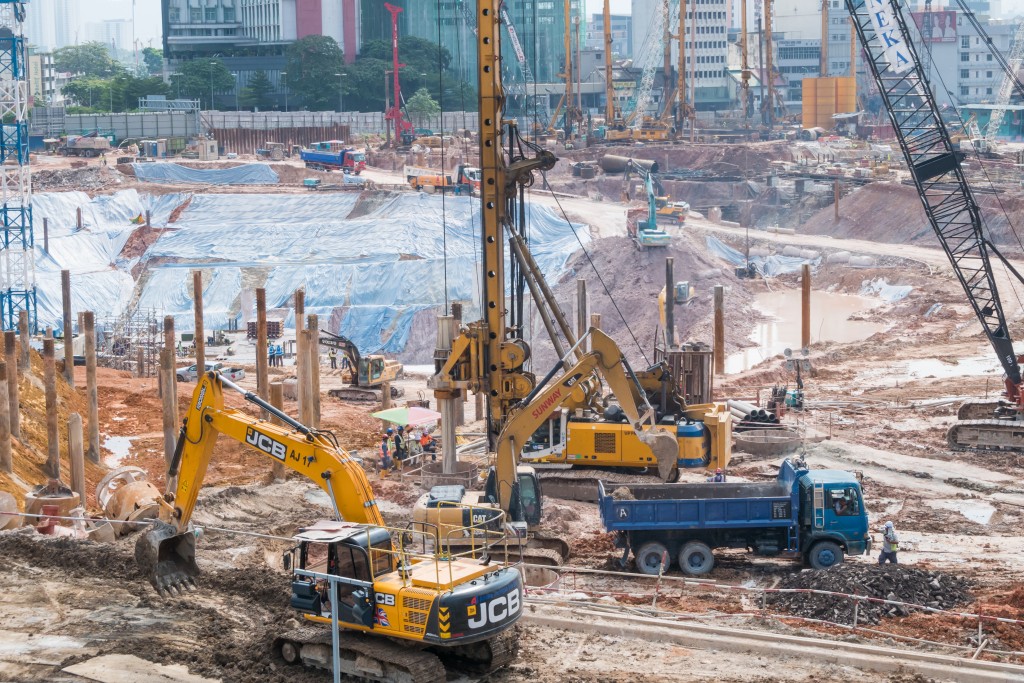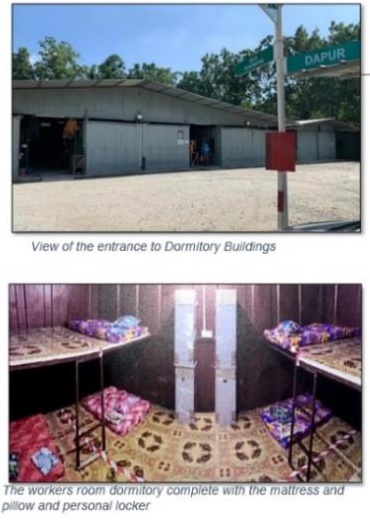Will we see better centralised labour quarters in 2024?
The progress to better workers’ conditions in the form of CLQs
By Yanika Liew
As more residential property developers venture into industrial development, attention is shifting to the often-overlooked aspects of industrial property, with a particular emphasis on functionality and connectivity. One such aspect gaining prominence is centralised labour quarters (CLQs).
In June, the State Development Corporation of Selangor (PKNS) committed to establishing a CLQ in Bandar Sultan Suleiman, showing its support for the Employees’ Minimum Standards of Housing and Amenities Act 1990.
The push to CLQs puts focus on providing workers with a standard of accommodation, as according to the Department of Statistics, Malaysia’s manufacturing and construction sector remains a key player in the economy. Despite its importance, it is known for its unsafe labour practices and inhumane working conditions. Well-designed CLQs put the focus on worker safety and comfort during their employment.
“The environment of construction is physically challenging. Construction is a synonym for the 3D – dirty, difficult and dangerous. However, CLQ is believed to enhance the image of the construction industry by providing holistic amenities and facilities,” Universiti Teknologi MARA Shah Alam’s College of Built Environment lecturer Zulkhairy Affandy Mohd Zaki said.
Zulkhairy, a quantity surveying studies lecturer of the college’s school of construction and quantity surveying, published his paper on CLQs based on research done with the LRT3 by WCT Bhd, located at Bandar Pinggiran Subang, Subang, Shah Alam.
“Local residents are not interested in working as construction labour due to several factors. The most significant factor is the wages offered in most of the construction projects are below their expectation. With these initiatives, locals might be attracted to work in the construction industry as the perspective on the image of a construction site has changed,” he pointed out.
While there has been scrutiny of worker conditions in the past, guidelines for construction worker accommodations are only guidelines, and developers are only encouraged to comply.
The difference between CLQs and other makeshift accommodations such as Rumah Kongsi, shop houses or other related accommodations, is that the concept of a CLQ centres around the experience of the worker, allowing them to experience convenience from the facilities and amenities provided.
“Some of the CLQs accommodate facilities such as laundry, canteen, pantry, futsal court, leisure and entertainment (weekend movie area), interfaith area, sick bay room and others,” Zulkhairy said.
“In a nutshell, the security and safety of the CLQ occupants are well guaranteed as the CLQ is provided with CCTV, face recognition entry-exit and security guards. To minimise the risk of exposure to fire, the CLQ is well-provided with fire extinguishers and sprinklers. All these facilities seemly not provided in Rumah Kongsi,” he added.
Moving forward into 2024, Zulkairy agrees that there seems to be more attention on CLQs: “Surely, construction companies will invest in CLQ in 2024 as the awareness is increasing and CLQ itself enables the cost-benefit effects for the stakeholders. Discussing the environmental impacts, the material [usually] used for CLQ is reusable, in the form of steel cabins, and reduces wastage in construction.”
He noted that well-maintained worker accommodations such as CLQ were important in the aftermath of Covid-19. These precautions and guidelines would be able to curb contagious diseases among the worker population.
When asked if the conditions of the project’s CLQ were comparable to other CLQs across Malaysia, he noted that he had been involved with preparing a report for CLQ for the MRT project in Sungai Buloh, finding it quite similar in terms of the facilities.
While some facilities differed due to the scale of the project, he believed that the concept was similar, as the planning guidelines had been endorsed by the Ministry of Local Government Development and Construction Industry Development Board (CIDB).
Investing in the future
Centralised labour quarters have the potential to elevate the Malaysian construction and manufacturing sector in the eyes of the international community.
“To facilitate Foreign Direct Investments (FDIs) in the Budget 2024 and address social concerns, it’s imperative to emphasise the enhancement of Construction Labor Quarters (CLQs),” the Malaysian Institute of Architects’ immediate past president Sarly Adre Sarkum said.
He pointed out that by improving CLQ conditions, developers not only promote better quality labour but also create an environment that is conducive to attracting and sustaining FDIs, thus fostering a harmonious and productive construction industry.
“Several factors may contribute to an increased investment in CLQs by developers and construction companies in 2024. Firstly, the emphasis on the construction industry in the Budget 2024, coupled with potential labour shortages, could drive companies to invest in better living conditions to attract and retain workers,” he said.
“Additionally, a continued focus on sustainable and socially responsible practices in the construction industry might encourage companies to enhance CLQ facilities. Large construction activities if not managed properly can bring about detrimental effects to the surrounding neighbourhood in terms of social issues and such,” he added.
Part of the interest in CLQs is the increasing developer interest in industrial parks, particularly the concept of managed industrial parks, of which developers such as Sime Darby Property Bhd, PKNS and more have begun to dip their toes.
A managed industrial park is a centralised industrial park managed and maintained by the developer, rather than being managed by the local authorities. This often results in a marked difference in the quality of maintenance and facilities, with community centres, and well-managed worker accommodations.
“Not much has changed since the issuance of the major guideline, Operation guidelines for Centralised Labour Quarters (CLQ) and accommodation of construction workers during the Movement Control Order (Document 3) in 2020 by the Ministry of Works and CIDB,” Sarly noted.
He chose not to cite specific examples of well-maintained CLQs, avoiding promotion of any particular developer. However, he noted that many of the major government-linked companies (GLC) government projects are moving rapidly to create high-quality CLQs.
With a stronger emphasis on labour conditions and global industry standards, these initiatives aim to bolster Malaysia’s service sectors.
However, the current focus on CLQs primarily stems from developers based in Selangor, Johor and Melaka, with Bernama reporting in August that the Melaka government is looking to build 40 Centralised Labour Quarters (CLQs) by 2025. Will the industry continue to push for higher standards in 2024? That remains to be seen.
Source: StarProperty.my



















POST YOUR COMMENTS